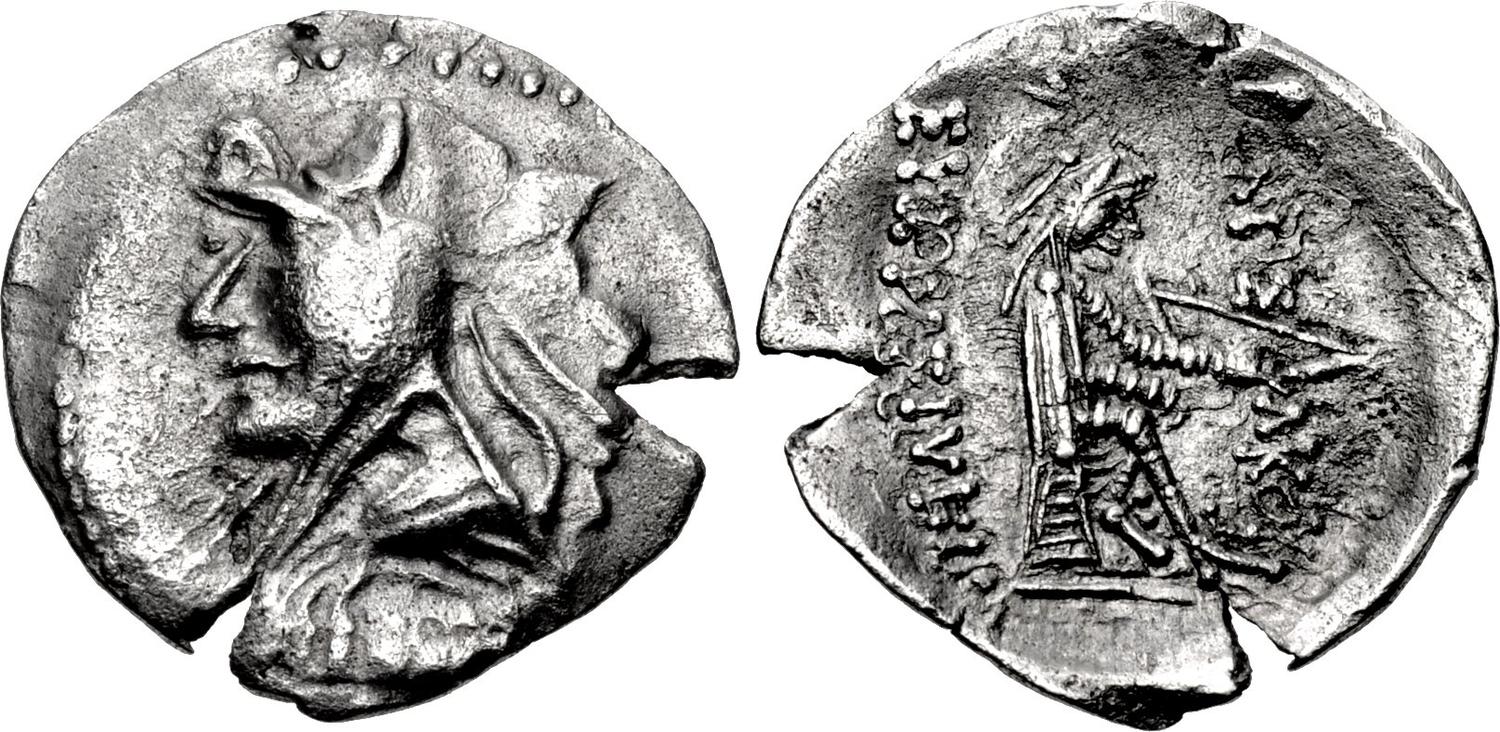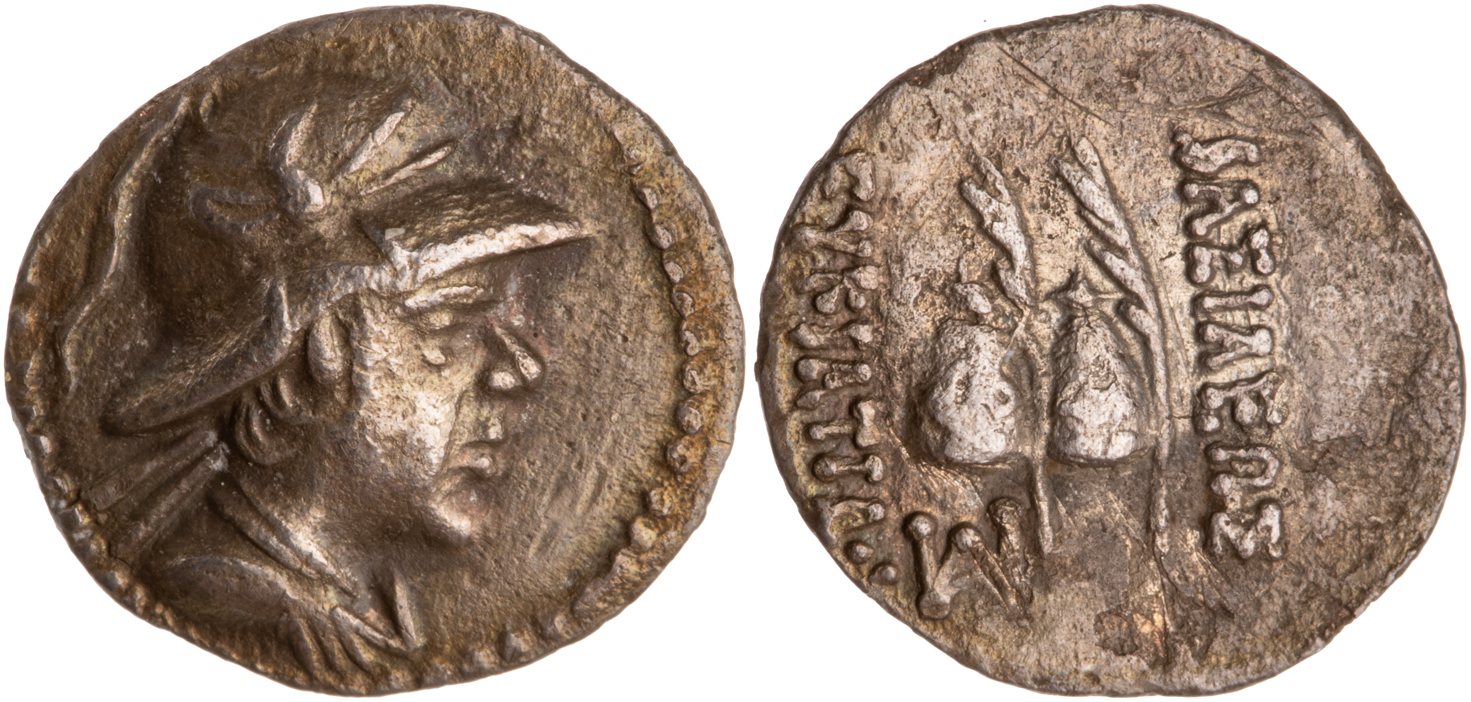171 BCE - 132 BCE | ΒΑΣΙΛΕΩΕ ΑPΣΑΚΟΥ
Description
| ObverseInscription or printing placed on the obverse.:
|
Head left, wearing bashlyk, torque and cloak.
|
ReverseInscription or printing placed on the reverse.:
|
ΒΑΣΙΛΕΩΕ ΑPΣΑΚΟΥ (Greek) Archer (Arsakes I) seated right on omphalos, holding bow
|
Mint and issuing power
Chronology
| FromIdentifies the initial date in a range assigned in a numismatic context. 171 BCE toIdentifies the final date in a range assigned in a numismatic context.. 132 BCE
|
Hellenistic 323-30 BC  periodTime period of the numismatic object. periodTime period of the numismatic object.
|
Physical description
MetalThe physical material (usually metal) from which an object is made.: Silver 
|
WeightWeight of the numismatic object (in grams). in grams: 0.660.66 g <br />660 mg <br />
|
DenominationTerm indicating the value of a numismatic object. Examples: tetradrachm, chalkous, denarius.: obol 
|
AxisDescribes the directional relationship between the obverse and reverse of a numismatic object.: 1212 mm <br />1.2 cm <br />
|
| DiameterDescribes diameter of an object (in mm).: 1414 mm <br />1.4 cm <br />
|
|
References
Description
| ObverseInscription or printing placed on the obverse.:
|
Bust of Eucratides I, diademed, draped and cuirassed right, wearing Boeotian helmet adorned with bull's horn and ear
|
ReverseInscription or printing placed on the reverse.:
|
ΒΑΣΙΛΕΩΣ ΕΥΚΡΑΤΙΔΟΥ (Greek) Two pilei with stars, palms to right of each
|
Mint and issuing power
Chronology
| FromIdentifies the initial date in a range assigned in a numismatic context. 171 BCE toIdentifies the final date in a range assigned in a numismatic context.. 145 BCE
|
Hellenistic 323-30 BC  periodTime period of the numismatic object. periodTime period of the numismatic object.
|
Physical description
| DenominationTerm indicating the value of a numismatic object. Examples: tetradrachm, chalkous, denarius. ᵖ:
|
obol 
|
|
|
References
References
- ^ Sellwoo 1980
- ^ B. R. Nelson 2011
- ^ https://numismatics.org/collection/1995.51.310?lang=fr

